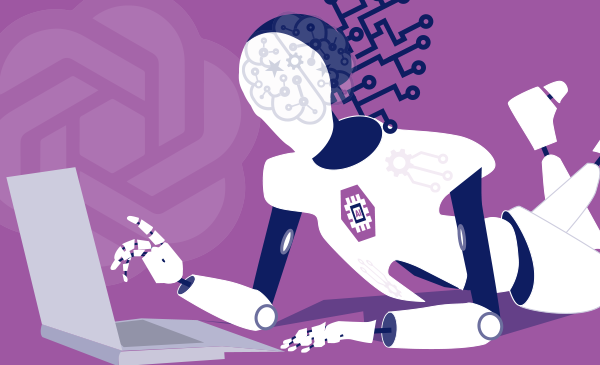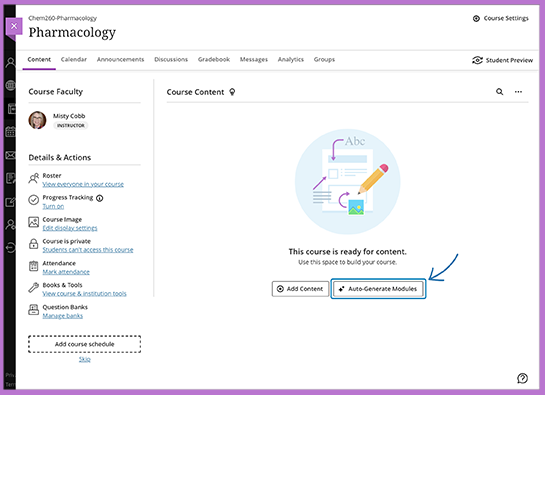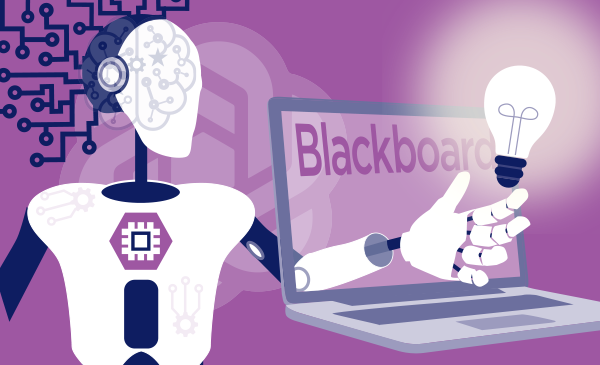Embracing the Potential of AI in Higher Education
by Bryan Libbin, Associate CIO for Academic Technology and Learning Innovation
quote Heading link
Recent updates to educational platforms like Blackboard Ultra demonstrate AI’s contributions by assisting instructors in tasks such as creating rubrics, organizing course content, suggesting relevant questions, and even aiding in image research. In these instances, AI acts as a bridge to enhance comprehension, critical thinking, usability, diverse perspectives, and learning objectives.
block 1 Heading link

The recent discussion surrounding AI in Higher Education at this year’s Provosts retreat highlighted the complex landscape of opinions and concerns surrounding this transformative technology. While some panelists emphasized the positive impact of AI on education, the majority of audience questions revolved around apprehensions related to academic integrity and assessment strategies. It is natural for new technologies to evoke uncertainty, but as we become more familiar with AI’s potential and limitations, its acceptance and benefits in higher education are likely to grow.
It’s essential to acknowledge that AI has quietly been a part of our lives for some time now. From search engine algorithms to marketing analytics, AI has seamlessly integrated into various aspects of our daily activities. In higher education, AI has played a role in word processing tools, aiding students in spell-checking and providing grammatical suggestions. However, the current landscape reveals even more tangible benefits of AI. Tools like Grammarly are helping students construct well-organized papers, improving their writing and research skills while offering a personalized experience.
block 2 Heading link

Additionally, recent updates to educational platforms like Blackboard Ultra demonstrate AI’s contributions by assisting instructors in tasks such as creating rubrics, organizing course content, suggesting relevant questions, and even aiding in image research. In these instances, AI acts as a bridge to enhance comprehension, critical thinking, usability, diverse perspectives, and learning objectives. However, integrating AI into education also raises ethical considerations. Protecting data privacy, addressing algorithmic biases, and ensuring equitable access are crucial aspects that require careful attention to make AI a truly beneficial tool for all students.
Embracing AI in education demands a commitment to continuous learning. Educators don’t need to become AI experts, but staying informed about AI advancements is essential to understanding how AI can enhance teaching methodologies and student learning experiences. As educators, we have the choice to adopt AI tools and applications to strengthen the learning environments we create, whether in online platforms or traditional classrooms. Alternatively, we have the choice to refrain from using them. The key takeaway is that educators play a pivotal role in determining what truly benefits our students and advances the cause of education.
While concerns about AI in higher education are valid, they should not overshadow the incredible potential it offers. As we navigate this transformative era, let’s approach AI with an open mind, recognizing that it can be a valuable ally in achieving our educational goals. By addressing ethical concerns, staying informed, and making thoughtful choices, we can harness AI’s power to create more engaging, effective, and equitable learning experiences for all. In doing so, we can ensure that AI in higher education becomes a force for positive change.

